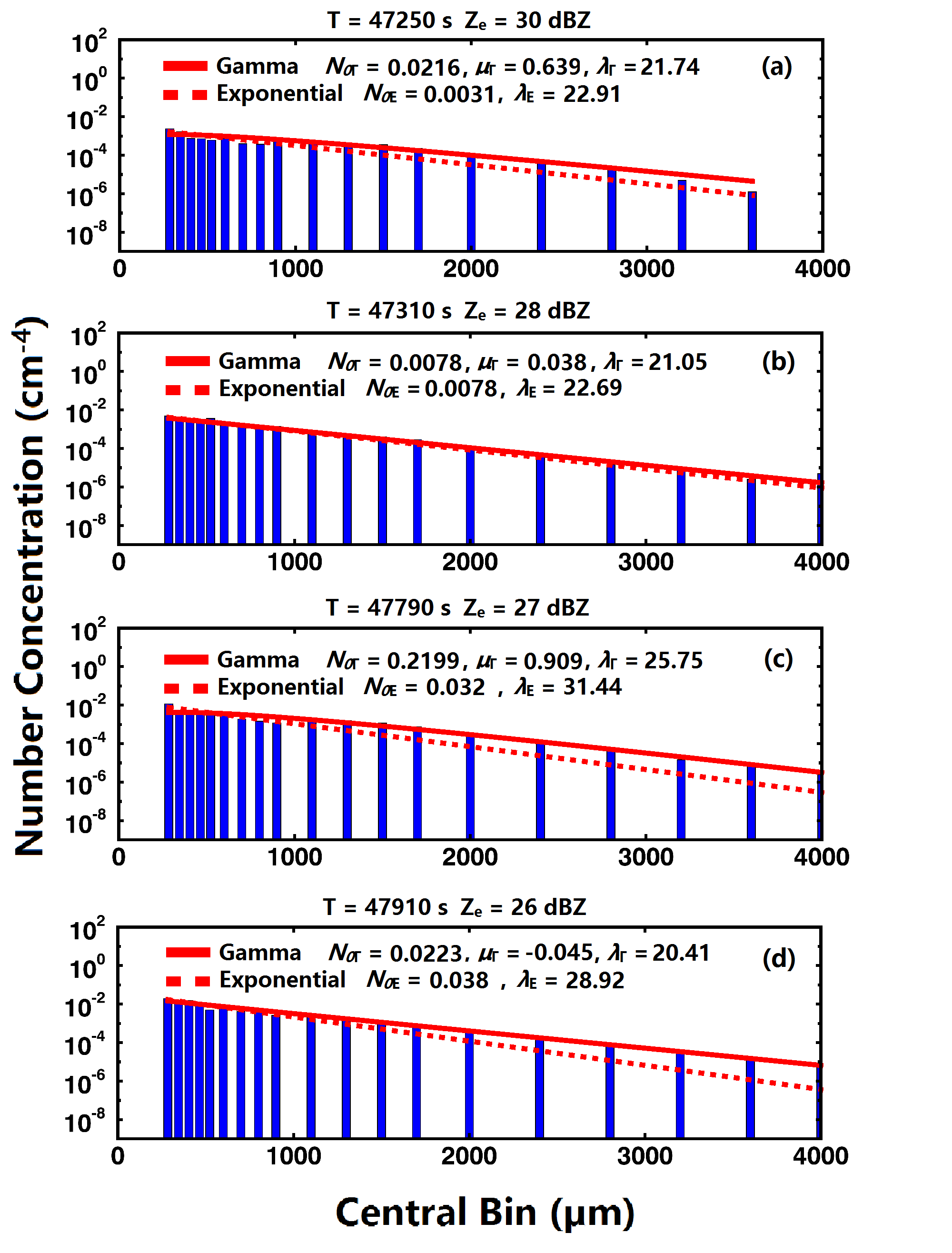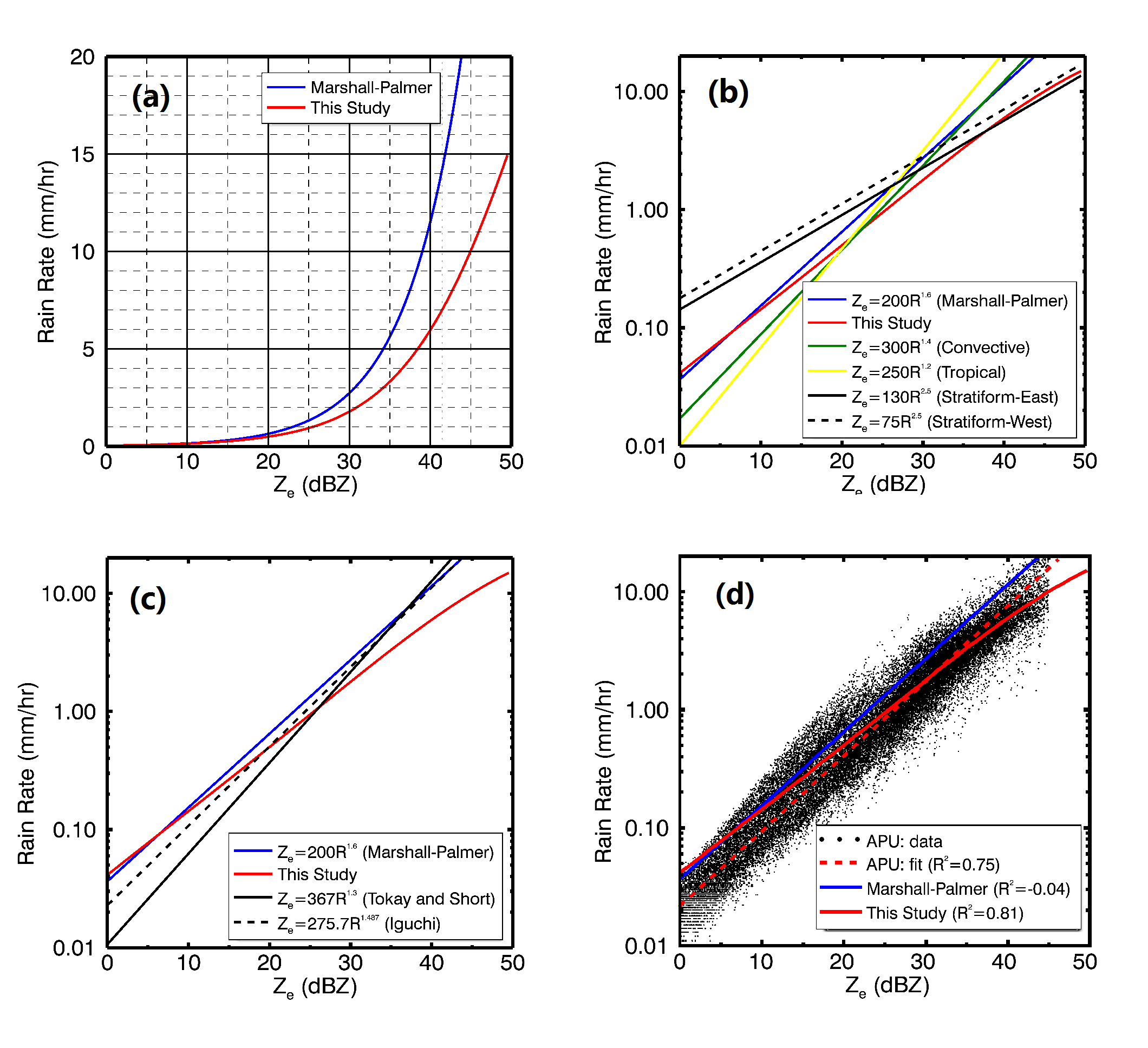New raindrop parameterization and stratiform rain quantitative estimation from aircraft and surface disdrometer
Submitter:
Dong, Xiquan — University of Arizona
Area of research:
Cloud Processes
Journal Reference:
Science
The characteristics of stratiform rainfall in deep convective systems (DCSs) have been intensively investigated through a variety of platforms, including satellite, ground-based radar, surface rain gauge network, and airborne remote measurements. Because aircraft in situ measurements have better collocations with radar observations and larger sample volumes than surface disdrometer measurements, aircraft can provide more accurate raindrop size distribution (DSD) information for cloud and precipitation studies. However, to the best of our knowledge, there are no precipitation retrieval methods developed through an integrative analysis of aircraft in situ, collocated radar reflectivity, and surface rain rate measurements.
Impact
To investigate liquid-phase (T > 3 oC) cloud and precipitation microphysical properties within DCSs, eight DCS cases sampled by the UND Citation II research aircraft during MC3E were selected. A full spectrum of DSD was constructed from 120 μm to 4000 μm through a combination of 2DC (120 to 900 μm) and HVPS (900 to 4000 μm) data sets. A total of 1,126 five-second DSDs have been used to fit to gamma and exponential functions within the stratiform rain (SR) regions of DCSs. The gamma shape μΓ and slope λΓ parameters are then compared with those derived from surface disdrometer measurements.
Summary
The similar μΓ - λΓ relationships but different μΓ and λΓ value ranges from two independent platforms at different elevations may represent the real nature of DSD shape information in clouds and at the surface. To apply the exponentially fitted DSD parameters to precipitation estimation using NEXRAD radar reflectivity factor Ze, the terms N0E and λE have been parameterized as a function of Ze using an empirical N0E–λE relationship. The averaged SR rain rate retrieved from this study is almost identical to the surface measurements, while the NEXRAD Q2 precipitation is twice as large. The comparisons indicate that the new DSD parameterization scheme is robust, while the Q2 SR precipitation estimation based on Marshall-Palmer Z-R relationship, where a constant DSD intercept parameter (N0E) was assumed, needs to be improved for heavy precipitation cases.



